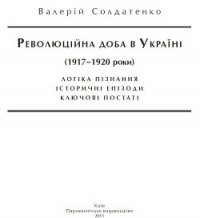The Andromeda Strain - Crichton Michael (книги полностью бесплатно txt) 📗
Stone said, "If that's a meteor, it's damned funny-looking."
"What bothers you?"
"That left border, over there." Stone pointed to the screen. "The surface of the stone- if it is stone- is rough everywhere except on that left border, where it is smooth and rather straight."
"Like an artificial surface?"
Stone sighed. "If I keep looking at it," he said, "I might start to think so. Let's see those other patches of green."
Leavitt set the coordinates and focused the viewer. A new image appeared on the screens. This time, it was a close-up of one of the green patches. Under high magnification the borders could be seen clearly. They were not smooth, but slightly notched: they looked almost like a gear from the inside of a watch.
"I'll be damned," Leavitt said.
"It's not paint. That notching is too regular."
As they watched, it happened: the green spot turned purple for a fraction of a second, less than the blink of an eye. Then it turned green once more.
"Did you see that?"
"I saw it. You didn't change the lighting?"
"No. Didn't touch it."
A moment later, it happened again: green, a flash of purple, green again.
"Amazing."
"This may be-"
And then, as they watched, the spot turned purple and remained purple. The notches disappeared; the spot had enlarged slightly, filling in the V-shaped gaps. It was now a complete circle. It became green once more.
"It's growing," Stone said.
They worked swiftly. The movie cameras were brought down, recording from five angles at ninety-six frames per second. Another time-lapse camera clicked off frames at half-second intervals. Leavitt also brought down two more remote cameras, and set them at different angles from the original camera.
In main control, all three screens displayed different views of the green spot.
"Can we get more power? More magnification?" Stone said.
"No. You remember we decided 440 was the top."
Stone swore. To obtain higher magnification, they would have to go to a separate room, or else use the electron microscopes. In either case, it would take time.
Leavitt said, "Shall we start culture and isolation?"
"Yes. Might as well."
Leavitt turned the viewers back down to twenty power. They could now see that there were four areas of interest, three isolated green patches, and the rock with its indentation. On the control console, he pressed a button marked CULTURE, and a tray 4t the side of the room slid out, revealing stacks of circular, plastic-covered petri dishes. Inside each dish was a thin layer of growth medium.
The Wildfire project employed almost every known growth medium. The media were jellied compounds containing various nutrients on which bacteria would feed and multiply. Along with the usual laboratory standbys- horse and sheep blood agar, chocolate agar, simplex, Sabourad's medium- there were thirty diagnostic media, containing various sugars and minerals. Then there were forty-three specialized culture media, including those for growth of tubercule bacilli and unusual fungi, as well as the highly experimental media, designated by numbers: ME-997, ME-423, ME-A12, and so on.
With the tray of media was a batch of sterile swabs. Using the mechanical hands, Stone picked up the swabs singly and touched them to the capsule surface, then to the media. Leavitt punched data into the computer, so that they would know later where each swab had been taken. In this manner, they swabbed the outer surface of the entire capsule, and went to the interior. Very carefully, using high viewer magnification, Stone took scrapings from the green spots and transferred them to the different media.
Finally, he used fine forceps to pick up the rock and move it intact to a clean glass dish.
The whole process took better than two hours. At the end of that time, Leavitt punched through the MAXCULT computer program. This program automatically instructed the machine in the handling of the hundreds of petri dishes they had collected. Some would be stored at room temperature and pressure, with normal earth atmosphere. Others would be subjected to heat and cold; high pressure and vacuum; low oxygen and high oxygen; light and dark. Assigning the plates to the various culture boxes was a job that would take a man days to work out. The computer could do it in seconds.
When the program was running, Stone placed the stacks of petri dishes on the conveyor belt. They watched as the dishes moved off to the culture boxes.
There was nothing further they could do, except wait twenty-four to forty-eight hours, to see what grew out.
"Meantime," Stone said, "we can begin analysis of this piece of rock- if it actually is rock. How are you with an EM?"
"Rusty," Leavitt said. He had not used an electron microscope for nearly a year.
"Then I'll prepare the specimen. We'll also want mass spectrometry done. That's all computerized. But before we do that, we ought to go to higher power. What's the highest light magnification we can get in Morphology?"
"A thousand diameters."
"Then let's do that first. Punch the rock through to Morphology."
Leavitt looked down at the console and pressed MORPHOLOGY. Stone's mechanical hands placed the glass dish with the rock onto the conveyor belt.
They looked at the wall clock behind them. It showed 1100 hours; they had been working for eleven straight hours.
"So far," Stone said, "so good."
Leavitt grinned, and crossed his fingers.
16. Autopsy
BURTON WAS WORKING IN THE AUTOPSY room. He was nervous and tense, still bothered by his memories of Piedmont. Weeks later, in reviewing his work and his thoughts on Level V, he regretted his inability to concentrate.
Because in his initial series of experiments, Burton made several mistakes.
According to the protocol, he was required to carry out autopsies on dead animals, but he was also in charge of preliminary vector experiments. In all fairness, Burton was not the man to do this work; Leavitt would have been better suited to it. But it was felt that Leavitt was more useful working on preliminary isolation and identification.
So the vector experiments fell to Burton.
They were reasonably simple and straightforward, designed to answer the question of how the disease was transmitted. Burton began with a series of cages, lined up in a row. Each had a separate air supply; the air supplies could be interconnected in a variety of ways.
Burton placed the corpse of the dead Norway rat, which was contained in an airtight cage, alongside another cage containing a living rat. He punched buttons; air was allowed to pass freely from one cage to the other.
The living rat flopped over and died.
Interesting, he thought. Airborne transmission. He hooked up a second cage with a live rat, but inserted a Millipore filter between the living and dead rat cages. This filter had perforations 100 angstroms in diameter- the size of a small virus.
He opened the passage between the two cages. The rat remained alive.
He watched for several moments, until he was satisfied. Whatever it was that transmitted the disease, it was larger than a virus. He changed the filter, replacing it with a larger one, and then another still larger. He continued in this way until the rat died.
The filter had allowed the agent to pass. He checked it: two microns in diameter, roughly the size of a small cell. He thought to himself that he had just learned something very valuable indeed: the size of the infectious agent.
This was important, for in a single simple experiment he had ruled out the possibility that a protein or a chemical molecule of some kind was doing the damage. At Piedmont, he and Stone had been concerned about a gas, perhaps a gas released as waste from the living organism.
Yet, clearly, no gas was responsible. The disease was transmitted by something the size of a cell that was very much bigger than a molecule, or gas droplet.
The next step was equally simple- to determine whether dead animals were potentially infectious.
He took one of the dead rats and pumped the air out of its cage. He waited until the air was fully evacuated. In the pressure fall, the rat ruptured, bursting open. Burton ignored this.
When he was sure all air was removed, he replaced the air with fresh, clean, filtered air. Then he connected the cage to the cage of a living animal.
Nothing happened.
Interesting, he thought. Using a remotely controlled scalpel, he sliced open the dead animal further, to make sure any organisms contained inside the carcass would be released into the atmosphere.
Nothing happened. The live rat scampered about its cage happily.
The results were quite clear: dead animals were not infectious. That was why, he thought, the buzzards could chew at the Piedmont victims and not die. Corpses could not transmit the disease; only the bugs themselves, carried in the air, could do so.
Bugs in the air were deadly.
Bugs in the corpse were harmless.
In a sense, this was predictable. It had to do with theories of accommodation and mutual adaptation between bacteria and man. Burton had long been interested in this problem, and had lectured on it at the Baylor Medical School.
Most people, when they thought of bacteria, thought of diseases. Yet the fact was that only 3 percent of them produced human disease; the rest were either harmless or beneficial. In the human gut, for instance, there were a variety of bacteria that were helpful to the digestive process. Man needed them, and relied upon them.
In fact, man lived in a sea of bacteria. They were everywhere- on his skin, in his ears and mouth, down his lungs, in his stomach. Everything he owned, anything he touched, every breath he breathed, was drenched in bacteria. Bacteria were ubiquitous. Most of the time you weren't aware of it.
And there was a reason. Both man and bacteria had gotten used to each other, had developed a kind of mutual immunity. Each adapted to the other.
And this, in turn, for a very good reason. It was a principle of biology that evolution was directed toward increased reproductive potential. A man easily killed by bacteria was poorly adapted; he didn't live long enough to reproduce.
A bacteria that killed its host was also poorly adapted. Because any parasite that kills its host is a failure. It must die when the host dies. The successful parasites were those that could live off the host without killing him.



